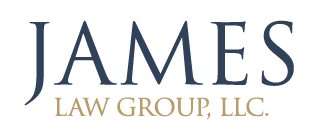These guidelines will help you determine who is responsible if you slip or trip and fall on someone else’s property.
Many thousands of people are injured each year – some very seriously – when they slip or trip and fall on a dangerous floor, a flight of stairs or a rough patch of ground. If you have been injured in this way, first consider that it is a normal part of living for things to fall or to drip on a floor or the ground and for smooth surfaces to become uneven. Also, some things put in the ground – a drainage grate, for example – serve a useful purpose there. Therefore, someone who owns or occupies property cannot always be held responsible for immediately picking up or cleaning every slippery substance on a floor. Nor is a property owner always responsible for someone slipping or tripping on something that an ordinary person should expect to find there or should see and avoid. We all have an obligation to watch where we’re going.
There is no precise way to determine when someone else is legally responsible for something on which you slip or trip. Each case turns on whether the property owner acted carefully so that slipping or tripping was not likely to happen – and whether you were careless in not seeing or avoiding the thing you fell on. Here are some general rules to help you decide whether someone else was at fault for your slip or trip and fall injury.
Determining a Property or Business Owner’s Liability
To be legally responsible for the injuries you suffered from slipping or tripping and falling on someone else’s property, the owner of the premises or the owner’s employee:
- must have caused the spill, worn or torn spot, or other slippery or dangerous surface or item, to be underfoot
- must have known of the dangerous surface but did nothing about it, or
- should have known of the dangerous surface because a “reasonable” person taking care of the property would have discovered and removed or repaired it.
The third situation is the most common, but is also less clear-cut than the first two because of those pesky words “should have known.” Liability in these cases is decided by common sense. The law determines whether the owner or occupier of the property was careful by deciding if the steps the owner or occupier took to keep the property safe were reasonable.
Reasonable Care of Property
In determining a property owner’s “reasonableness,” the law concentrates on whether the owner makes regular and thorough efforts to keep the property safe and clean. Here are some initial questions you can ask to determine whether a property or business owner may be liable for your slip or trip and fall injuries:
- If you tripped over a torn, broken or bulging area of carpet, floor or ground, or slipped on a wet or loose area, had the dangerous spot been there long enough so that the owner should have known about it?
- Does the property owner have a regular procedure for examining and cleaning or repairing the premises? If so, what is it and what proof does the owner have this regular maintenance?
- If you tripped over or slipped on an object someone had placed or left on or in the floor or ground, was there a legitimate reason for the object to be there?
- If there once had been a good reason for the object to be there but that reason no longer exists, could the object have been removed or covered or otherwise made safe?
- Was there a safer place the object could have been located, or placed in a safer manner, without much greater inconvenience or expense to the property owner or operator?
- Could a simple barrier have been created or warning given to prevent people from slipping or tripping?
- Did poor or broken lighting contribute to the accident?
If the answers to one or more of these questions come out in your favor, you may have a good claim for compensation. However, you must still think about whether your own carelessness contributed in any significant way to your accident.
Consider Your Own Carelessness
In almost every slip or trip and fall case, you must decide whether your carelessness contributed to the accident. The rules of “comparative negligence” help measure your own reasonableness in going where you did, in the way you did, just before the accident happened. There are some questions you should ask yourself about your own conduct – an insurance adjuster will almost certainly ask them after you file your claim.
- Did you have a legitimate reason – a reason the owner should have anticipated – for being where the dangerous ground was?
- Should a careful person have noticed the dangerous spot and avoided it, or walked carefully enough not to slip or trip?
- Were there any warnings that the spot might be dangerous?
- Were you doing anything that distracted you from paying attention to where you were going or were you running, jumping or fooling around in a way that made falling more likely?
You don’t have to “prove” to an insurance adjuster that you were careful. But think about what you were doing, and describe it clearly so that an insurance adjuster will understand that you were not careless.
To read and print out a copy of the Form please link below.
Checklist: Information and Documents to Collect for Your Lawyer (pdf)
